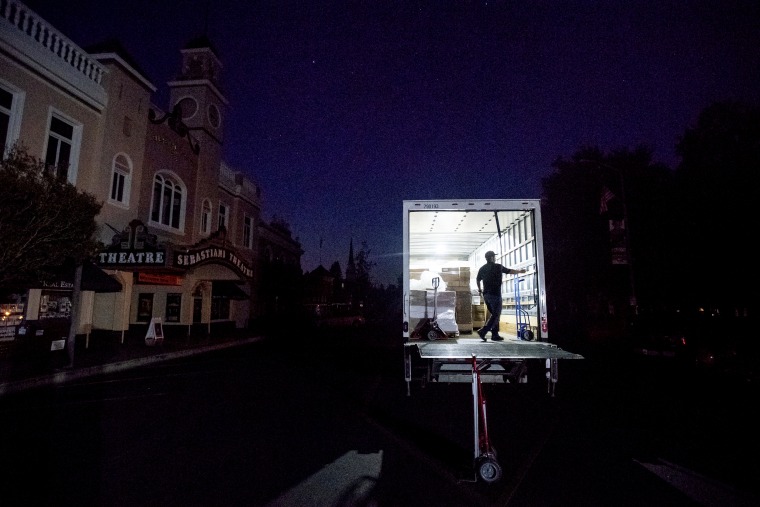Thousands of Northern Californians lost power Wednesday morning as the embattled giant utility Pacific Gas & Electric began pulling the plug as a preventive measure against potential wildfires.
In the biggest planned electric shutdown in state history, the utility, which is known as PG&E, started turning off the power that residents and businesses use for lights, television sets, computers, stoves and air conditioners in rolling blackouts planned for 30 counties with almost 800,000 paying accounts, affecting more than a million people.
The shutdown was aimed at keeping power off live wires on a warm and windy day, ideal for the spread of wildfires, a state elected official slammed the rolling blackouts as "unacceptable."
Schools around the region were closed in anticipation, and some morning commuters were slowed by non-functioning traffic signals, forcing police to direct drivers.
PG&E set up resource centers around Northern California so customers could charge up devices, use the bathroom or grab a bottle of water.
And once power is curtailed, it could take several days for electricity to be restored as inspectors make sure that lines are safe to be reactivated.
State Sen. Scott Wiener, a Democrat representing the San Francisco area, called the blackouts "unacceptable," estimating that 2.5 million people could ultimately be affected.
"It's hard to overstate the impact of this massive rolling blackout, affecting 2.5 million people," Wiener said in a statement. "People rely on electricity for their medicine, their food and their livelihoods. This is a completely unacceptable state of affairs. We can't let PG&E normalize these mass blackouts."
Schools were shut down Wednesday. The University of California at Berkeley, the state's flagship university, with more than 42,000 undergraduate and graduate students, also called off classes.

The power shutdown comes after last year's Camp Fire killed 85 people and destroyed thousands of structures. PG&E has acknowledged that its equipment "probably" started what was the deadliest wildfire in state history.
PG&E has previously declared so-called public safety power shutoffs when dry, windy conditions threaten to spark fires around power lines — this will be the fourth in the past month.
The utility shut down power to about 50,000 customers in Northern California late last month and to about 24,000 customers the week before that.
Download the NBC News app for breaking news
But the scale of this week's measures dwarfs what's happened in the past.
Within Wednesday's mass shutdowns, some important services still had electricity.
For example, lights remained on inside the Caldecott Tunnel, cutting through the Berkeley Hills into suburban Contra Costa County, and the Tom Lantos Tunnel, a stretch of State Route 1 through Devil's Slide in Pacifica, the state Transportation Department said.
